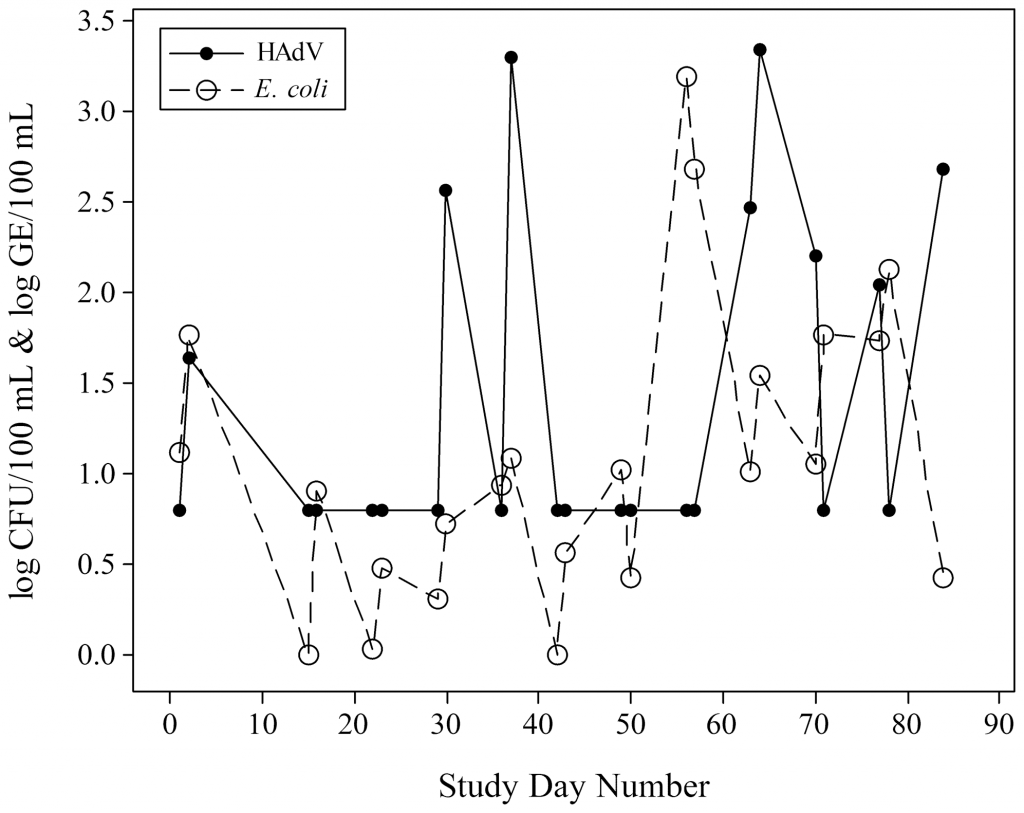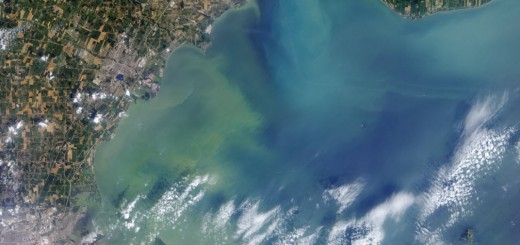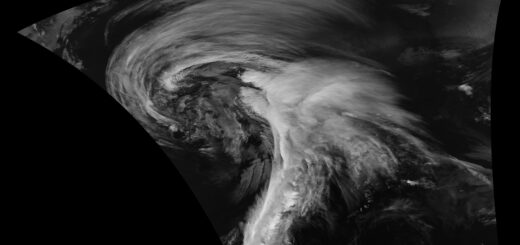Research Summary: Integrating Bacterial And Viral Water Quality Assessment To Predict Swimming-Associated Illness At A Freshwater Beach
0Background & Objective
Recreational waters impacted by fecal contamination have been linked to gastrointestinal illness in swimmer populations. To date, few epidemiologic studies examine the risk for swimming-related illnesses based upon simultaneous exposure to more than one microbial surrogate (e.g. culturable E. coli densities, genetic markers). We addressed this research gap by investigating the association between swimming-related illness frequency and water quality determined from multiple bacterial and viral genetic markers.

Figure 1. Time series plot for HAdV and E. coli densities measured during the 2009 swimming season at the study beach (East Fork Lake, Ohio). (Credit: Marion, et al.)
Methods
Viral and bacterial genetic marker densities were determined from beach water samples collected over 23 weekend days and were quantified using quantitative polymerase chain reaction (qPCR). These genetic marker data were paired with previously determined human exposure data gathered as part of a cohort study carried out among beach users at East Fork Lake in Ohio, USA in 2009. Using previously unavailable genetic marker data in logistic regression models, single- and multi-marker/multi-water quality indicator approaches for predicting swimming-related illness were evaluated for associations with swimming-associated gastrointestinal illness.

Table 1. Microbial water quality measured by various genetic markers and E. coli at East Fork Lake, Ohio (N = 23). (Credit: Marion, et al.)
Results
Data pertaining to genetic marker exposure and 8- or 9-day health outcomes were available for a total of 600 healthy susceptible swimmers, and with this population we observed a significant positive association between human adenovirus (HAdV) exposure and diarrhea (odds ratio = 1.6; 95% confidence interval: 1.1–2.3) as well as gastrointestinal illness (OR = 1.5; 95% CI: 1.0–2.2) upon adjusting for culturable E. coli densities in multivariable models. No significant associations between bacterial genetic markers and swimming-associated illness were observed.
Conclusions
This study provides evidence that a combined measure of recreational water quality that simultaneously considers both bacterial and viral densities, particularly HAdV, may improve prediction of disease risk than a measure of a single agent in a beach environment likely influenced by nonpoint source human fecal contamination.
Full study published in the open-access journal PLOS ONE.
Featured Image: Illinois Beach State Park. (Credit: Wikipedia User Wrongdave via Wikimedia Commons)













